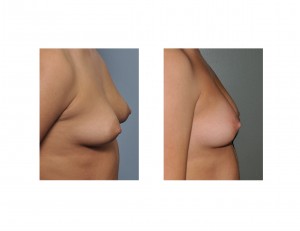
A reasonably-sized areola (the outer ring that makes up most of its diameter) will be highly influenced by the size of the breast mound onto which it sits. And most of the time there is a good correlation between the size of the two. But that is not always true and it is not rare to have a really large areola on a small breast mound. This disproportion between areolar size and breast mound is often called a mega-areolar deformity. Within these areolar deformities is a range of manifestations from just slightly too large to extremely so.
The size of the areola can be circumferentially reduced by a periareolar reduction technique. The larger outer ring of the areola is removed and downsized to the desired diameter. While a periareolar technique is more commonly associated with breast lifting through the removal of a ‘donut’ of skin, it works even better for reduction of the large areola. This is because the amount of areolar reduction needed is frequently less than the skin that would be removed in a breast lift. Less tissue removed translates to less tension on the wound closure, resulting in less risk of eventual scar widening
Case Study: This 22 year-old female had long been bothered by the size of her areolas. She felt they were too big and this was embarrassing for her. She was happy with the size of her breasts but felt the size of her areolas was too much for her smaller-sized breasts.



Case Highlights:
1) Large areolas (mega-areolar deformity) can be downsized through a periareolar reduction technique.
2) Periareolar reduction produces a very modest breast lifting effect.
3) Smaller areolas can make the breast mound look slightly bigger as the areolar-mound size ratio changes.
Dr. Barry Eppley
Indianapolis, Indiana


